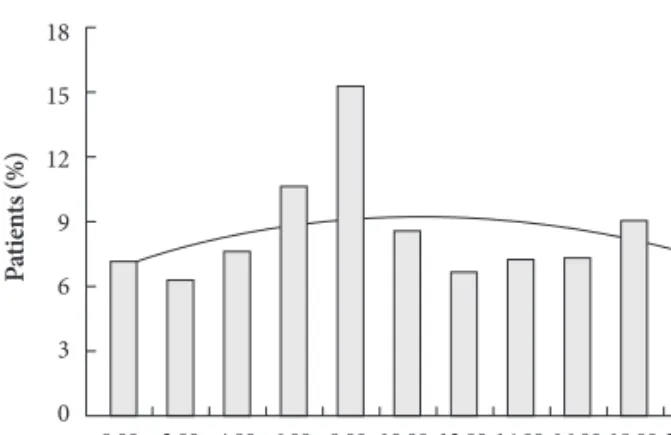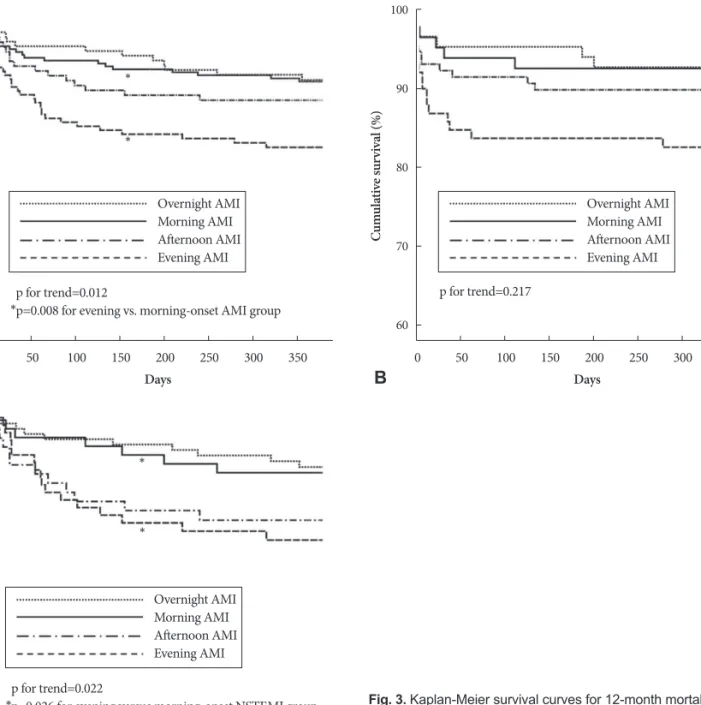616
Open Access
Introduction
A circadian variation in the frequency of onset of acute myocardial infarction (AMI) has been reported in a number
of studies over the past several decades. A majority of large- scale reports have shown a peak incidence in morning hours, although a secondary peak incidence in the late evening has sometimes been reported.
1-7)The higher incidence of ST- segment elevation myocardial infarction (STEMI) in early morning has been explained by changes in catecholamine lev- els, fibrinolytic activity, blood pressure, platelet aggregability, coronary tone, and endothelial function.
4)5)8-10)Differences in the circadian variation of AMI in different regions of the world and in different ethnic groups have also been reported.
4)5)7)11)Although associations between the time of onset of AMI and in-hospital or 30-day mortality were suggested in some previous studies,
12)13)not much is known about the 12- month mortality of AMI, including STEMI and non-STEMI (NSTEMI). The aim of this study was to investigate the impact of circadian variation
Received: February 13, 2010 Revision Received: April 26, 2010 Accepted: May 12, 2010
Correspondence: Yongkeun Cho, MD, Department of Internal Medi- cine, Kyungpook National University Hospital, 50 Samdeok 2-ga, Jung- gu, Daegu 700-721, Korea
Tel: 82-53-420-5528, Fax: 82-53-426-2046 E-mail: choyk@mail.knu.ac.kr
cc
This is an Open Access article distributed under the terms of the Cre- ative Commons Attribution Non-Commercial License (http://creativecom- mons.org/licenses/by-nc/3.0) which permits unrestricted non-commer- cial use, distribution, and reproduction in any medium, provided the origi- nal work is properly cited.
The Impact of Circadian Variation on 12-Month Mortality in Patients With Acute Myocardial Infarction
Myung Hwan Bae, MD
1, Hyeon Min Ryu, MD
1, Jang Hoon Lee, MD
1, Ju Hwan Lee, MD
2, Yong Seop Kwon, MD
3, Sang Hyuk Lee, MD
1, Dong Heon Yang, MD
1, Hun Sik Park, MD
1, Yongkeun Cho, MD
1, Shung Chull Chae, MD
1, Jae-Eun Jun, MD
1and Wee-Hyun Park, MD
11
Department of Internal Medicine, Kyungpook National University Hospital, Daegu,
2
Department of Internal Medicine, Gumi Cha Hospital, Gumi,
3

